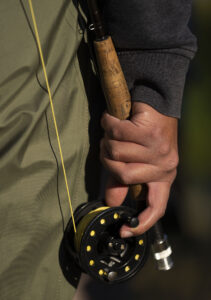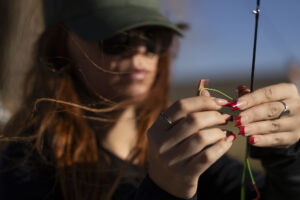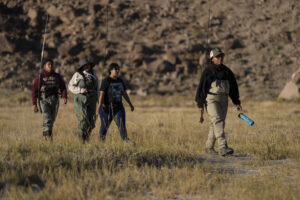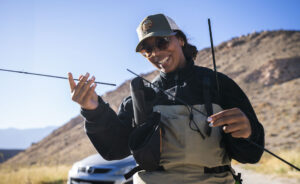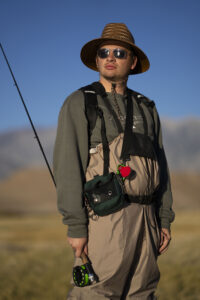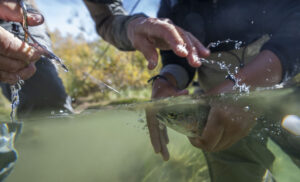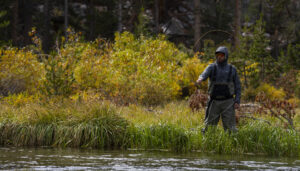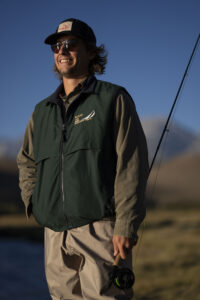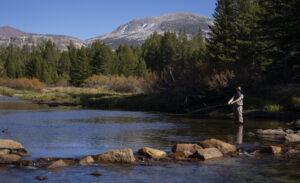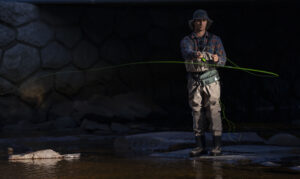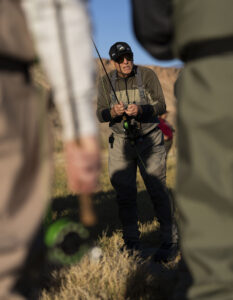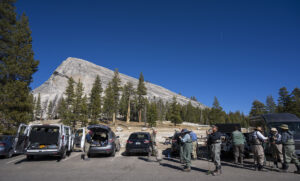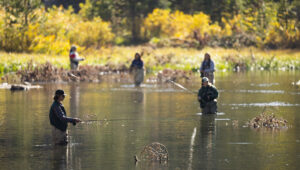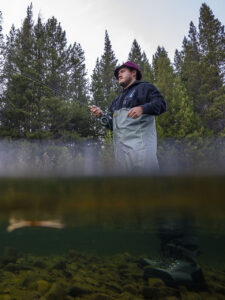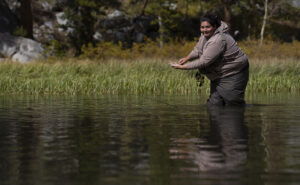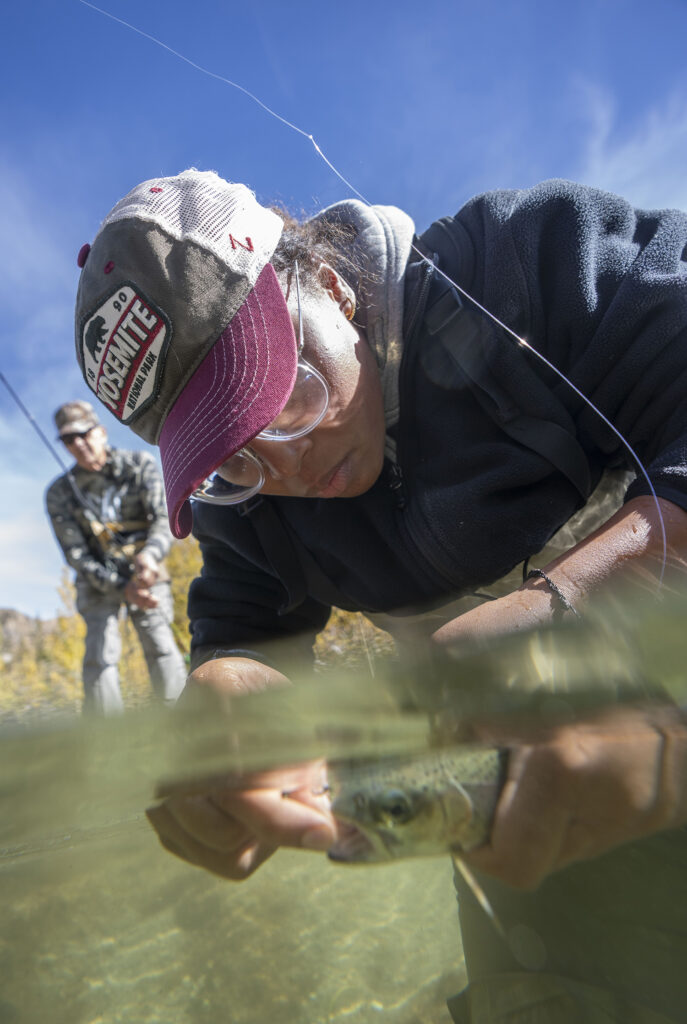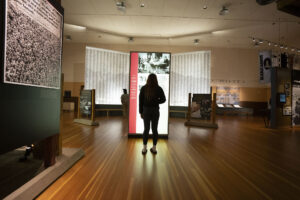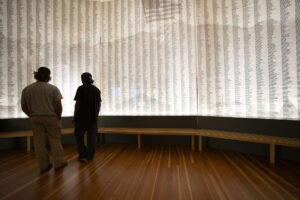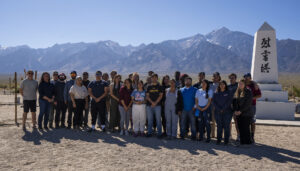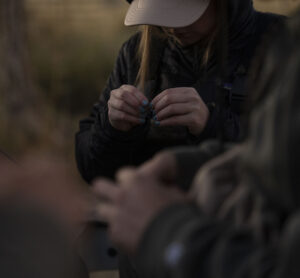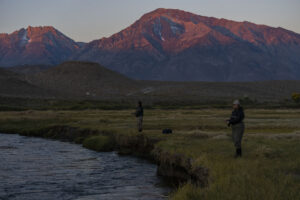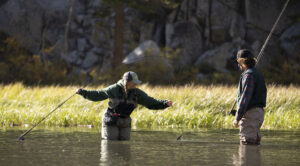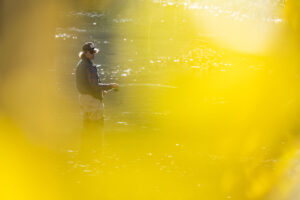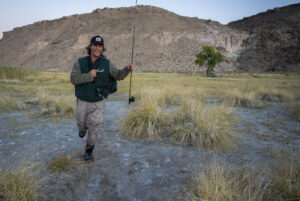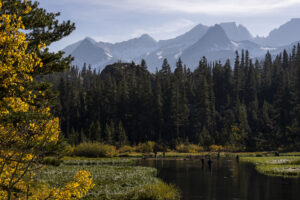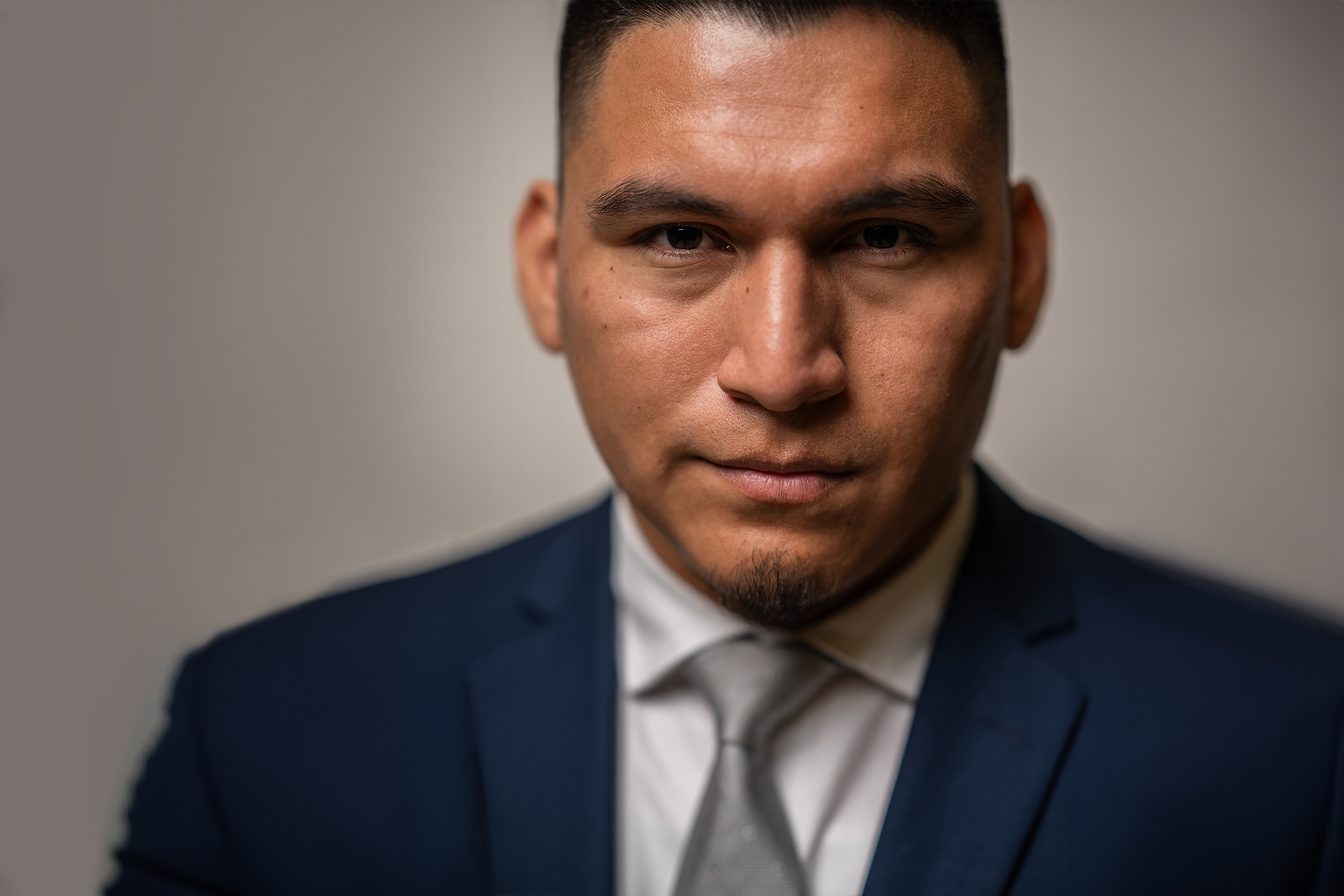Angling
For Life Lessons
History, culture, and respect for the outdoors are among the intramural course’s greatest lessons.
Darkness falls over the looming peaks of the Sierra Nevada mountains, and a group of CSUDH students huddle around a roaring campfire. It’s the middle of October, and the temperature in the Owens Valley dips sharply when the sun goes down.
George Wing smiles as the students’ laughter echoes across the campground. He’s been bringing students to Bishop, Calif., for nearly a decade, to participate in an intramural class unlike any other at the university: fly fishing.
Most of the students who sign up have no prior experience fishing or camping, and learning the skills to enjoy the outdoors is as much a focus of the class as catching fish. “It’s been life-changing for a lot of them,” says Wing, turning toward the ring of students around the campfire. “I get texts and photos from former students all the time. Now they’re going camping and fishing with their own children.”
Fishing in Urban Los Angeles
Wing arrived at CSUDH in 1988 as head coach of the baseball team, later joining the faculty of the Kinesiology Department as a lecturer in 2006, and director of Intramural Sports in 2011. Three years later, Wing and department chair Michael Ernst came up with the idea for the fly-fishing class.
The curriculum is informal but rigorous. Students learn their way around a fly rod and the necessary accessories—fly lines, leaders, tippets. They discover the subtle art of tying flies and securing them to their lines. Finally, they practice the gentle, whip-like cast that, if done correctly, drops the fly lightly on the surface of the water.
A portion of each class is set aside for students to practice their casting at the university swimming pool. “Casting is one of the hardest things for me to learn,” says Savannah Foster, a junior design major at CSUDH who is taking the class for a second time. “When you’re near a river, there are trees that can snag your line. It won’t be completely flat like the pool.”
Learning the proper uses of a back cast or a roll cast is only part of the difficulty, Foster adds. “I can never remember how to tie the various knots. I always need help. I learn the knots, and then I forget them. I’m hoping the lessons will eventually stick.”
Each semester, the class packs up their camping equipment (funded by the Associated Students, Inc. through the Instructionally Related Activities fee) and piles into a van headed north. Soon, they’ll find out if their casting technique and hand-tied flies are good enough to fool the rainbow trout populating the region’s rivers and streams, and if nights under the starry skies are everything Wing promised they’d be.
Fellowship of the Fly
It’s rarely just Wing alone with his class on these trips. Daniel Garcia completed a post-baccalaureate certification in the Clinical Lab Science program at CSUDH in 2019. He took Wing’s class twice as a student and has continued to join field trips as a mentor to new students ever since. “I picked up fly fishing pretty quickly, and maybe Coach Wing recognized my passion for it,” he said.
Then there’s Thom Glonchak, a retired firefighter who met Wing when their sons played on the same youth baseball team. They have coached together, and now they share a passion for fly fishing, which Glonchak brings to the field trips as well. “I like to figure out where the fish are hiding or holding in the stream or river,” he says. “Then you have to figure out which fly to use and what will entice them to bite.”
It was on the lower Owens River a year ago that Glonchak met Mark Williams, a transportation and logistics professional who lives in Bishop and devotes any spare time he has to fly fishing. Williams later met Wing, and since then has fished alongside students each semester when they come to Bishop.
“George and these kids really inspired me to give back what was given to me,” says Williams, who took a previous class to see ancient petroglyphs in Chidago Canyon just north of Bishop. These rock art sites were created thousands of years ago by ancestors of the Paiute-Shoshone peoples.
“There’s so much to learn out here,” says Williams. “There were people here long before me, and there’ll be people here long after I’m gone. The lessons that these opportunities give are priceless.”
It’s not just petroglyphs and campsites on these trips. Located 45 minutes south on Highway 395, the Manzanar National Historic Site is a potent reminder not only of the forcible relocation of Japanese Americans during World War II but of a longer tradition of displacement that saw the removal of Owens Valley Paiute settlements by ranchers in the late 19th century. It’s also a fixture on every student trip to Bishop.
Joshua Barragan, a senior environmental studies major, says Manzanar provides an important opportunity to learn the history and culture of the areas where they fish. “There’s so many stories that are told at Manzanar, and so many records of peoples’ lives,” he says. “The last time we came, we actually met a former internee during our tour who shared some of his personal memories of life at the camp.”
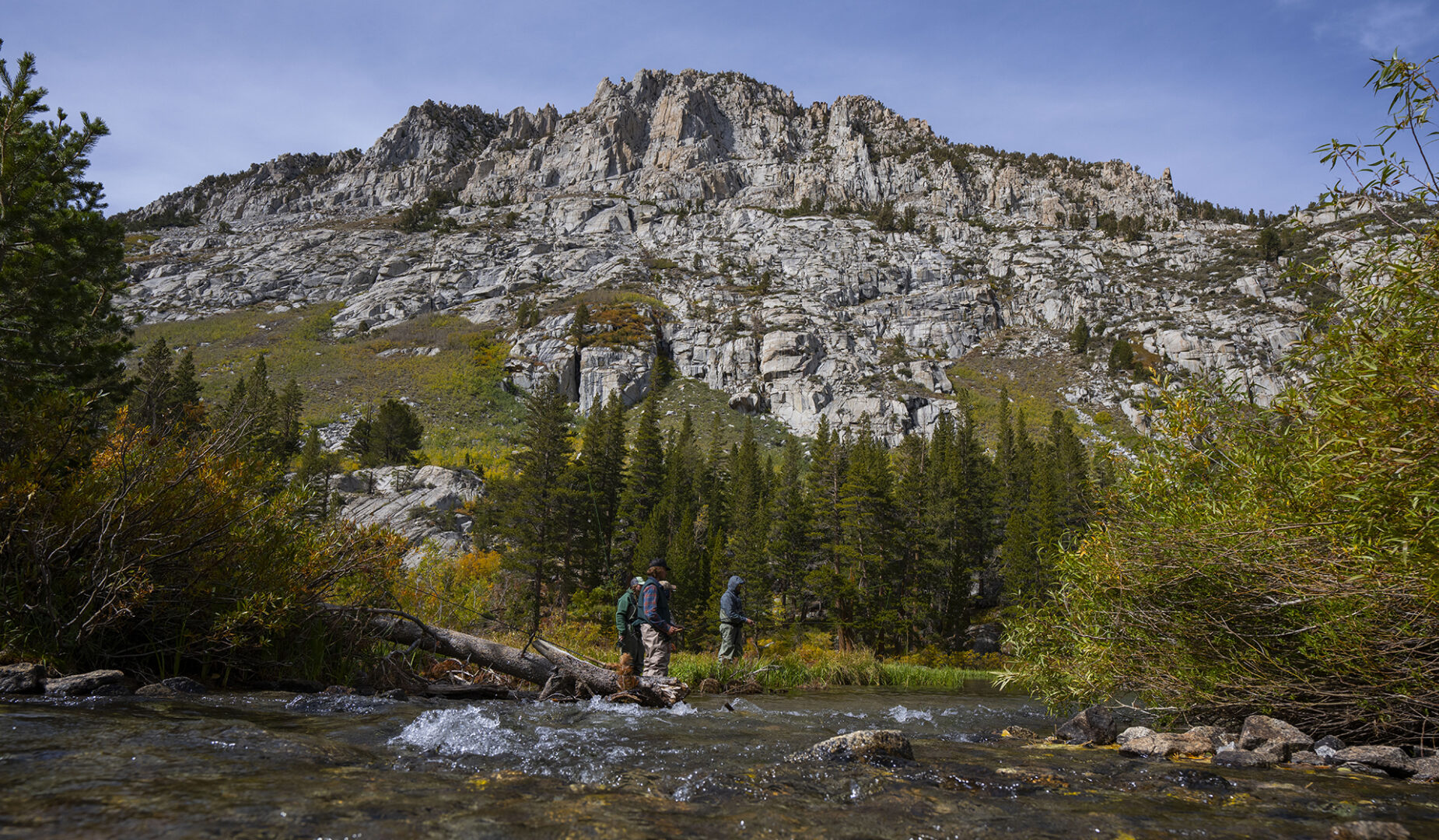
Connecting People, Places, and Things
Wing turned 70 this year and says he’s beginning to think about retirement. For now, he plans to continue the class that has meant so much to so many students. “Coach Wing’s approach to teaching is really gentle,” says Foster, who took the course the first time to ease back into her studies after taking a break. “It’s the opposite of an academic course. He’s just like, ‘This is what I do, this is why I love it, and I want to share it with you.’ It was just such a welcoming experience coming back from a year off.”
As the fire begins to sputter at the Bishop campground, students start preparing for bed. Morning comes early, and they have a full itinerary. A few of them celebrated their first catch earlier in the day and are excited for more. Others haven’t been as fortunate. In the end, the results don’t always seem as important than the process. “Fly fishing connects you to the natural world, and it creates bonds between people,” says Wing. “In Owens Valley, it also connects you to those who have fished these waters for thousands of years. Now we’ve all become part of the long history of this place.”


